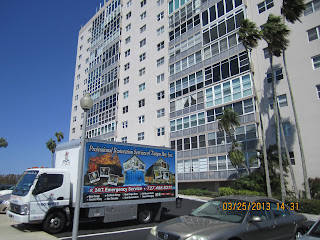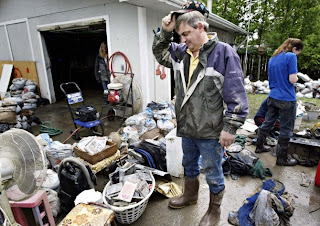1. Maintain an inventory of household items
You should make a list of items in your home, particularly the more expensive items, and keep a list of what the actual or estimate cost is. Taking photos of the items and storing them on an online database like Dropbox will insure the photos will be easily accessible in a time of need. If you have any receipts for the more expensive items, it would be a good idea to take photos of them too. If you are not saving your receipts, you should start.
2. Understand what your insurance policy covers
Knowing what your insurance policy covers and what it doesn't is essential to getting through the claims process quickly. You do not want to have to rely only on what claims adjusters tell you, especially as they go through the process of evaluating how much of a payout you are going to get. It is important to remember that standard homeowners insurance policies do not cover flood damage.
Flood damage is defined as any water that enters your home that made contact with the ground prior to. Unlike water damage which is defined as water that enters your home before it makes contact with the ground. For example, a leaky roof caused by heavy rain. Make sure you are insured to cover all casualties.
3. Quickly document damage and make only temporary repairs
After the storm has passed and it is safe, it's important to take photos of the damage right away. Comparing these photos to the ones taken before the storm can be used to establish the value of items that are damaged or destroyed. You should cover up any holes in the roof or broken windows to prevent any further damage. You should not make any permanent repairs and make sure to take videos or photographs of the damages to your home. Do not throw out any damaged furniture or other expensive items until an adjuster has seen them.
4. Contact your insurer as soon as possible
Homeowners should call their insurer quickly and get the claims process started, regardless of how much or how little damage was done to their home. You can contact your insurance agent or the insurance company to get more information on the process of setting up a claim. You should document the name and number of whom you speak with for every call during the claims process. That can clear up any confusion that may arise along the way.
5. Be prepared to negotiate
Once insurance adjusters look over the damage, they will determine the size of your payout. But if that figure seems too low, there are ways to voice your disagreement and try to work out a better settlement. You will want to ask the adjuster to show you the contract language and justify the proposed amount.
If you are still dissatisfied, get a second or third opinion on the cost of repairs from local licensed contractors. You can use that to argue for a bigger payout. In an ideal situation you will be able to work your claim out with your adjuster, but if not, you should look into legal action or possibly hiring a public insurance adjuster. They are experts on the insurance claims process and can assess the damage to a home and help build the case on behalf of the homeowner.
6. Watch out for scam artists
Many homeowners want to immediately get started on repairing the damage to their property. This makes them targets for uninsured and unqualified contractors. It is important to do your homework and make sure you are hiring a reputable and insured company.
To verify a Pinellas County license, go to-
To verify a State license, go to- https://www.myfloridalicense.com/wl11.asp































.jpg)

.JPG)
.jpg)














